“Come Fairies, take me out of this dull world, for I would ride with you upon the wind and dance upon the mountains like a flame!” — William Butler Yeats
I don’t care where you live, or which fly rods you use, or what species of fish you like to chase. There’s not a fly fisher alive who wants to wake up in the morning and hear these three words.
“Damn, it’s blowing.”
Wind is a serious problem for anglers. The more it howls, the harder it is to cast. The harder it is to cast, the harder it is to fish effectively. That’s just the way it works.
If you’re old enough to have a full cupboard of fly fishing memories, chances are pretty good that you have a couple of personal, “Lord, that wind was tough” stories. I still remember the day I hit a mile long stretch of flat water with two anglers in my drift boat and a serious gale blowing upstream. It took me almost an hour and a half to row through those whitecaps to the take-out.
More Like This
Then there was the time we put a three-man pontoon boat on Idaho’s Teton River and gave up on our float after getting pummeled by upstream gusts for the better part of an hour. When we finally called it quits, the wind blew us the three hundred yards back upstream to the put-in. The absolute worst, though, was the day I floated the Box Canyon on the Henry’s Fork and, with no warning at all, a hurricane force storm came rolling in. Not only was it impossible to fish, but there were so many limbs breaking off trees, and trees snapping in half, that it wasn’t safe to try to wait things out on the bank. We anchored up and huddled in the boat while a microburst that resembled an atmospheric chainsaw did its best to turn the surrounding forest into kindling.
Fortunately, those types of days are rare. If you have a mobile phone and a decent weather app, you shouldn’t have too much trouble keeping an eye on the forecast and avoiding wind that puts life and limb at risk.
The bigger issue for most of us is that it’s just not much fun to fly fish in a stiff breeze. A steady 10 mph wind can take the shine off an otherwise stellar day. Add an extra five to ten miles per hour and most folks struggle with errant casts and seriously diminished accuracy. I usually draw the line at 25 mph — although there’s a little wiggle room in there. If the forecast calls for lighter winds with gusts to 25, then I may well give it a shot. If it’s a straight 25 mph, though, or higher … well, there are more enjoyable things than fighting an invisible enemy who exists solely to ruin your time on the water. Fly fishing is supposed to be fun. When it’s so damn windy that your angling becomes an exercise in masochism, then it’s time to consider more pleasant alternatives.
Over the years, there have been a fair number of ‘how-to’ stories dedicated to the subject of fly fishing in the wind. Fortunately, it’s easy enough to sum up the most helpful advice. First, if you have a full quiver of rods & reels, it makes sense to go a line size or two heavier. A heavier rod and line almost always perform a little better when it’s blowing hard.
Second, if there’s a prevailing wind coming from a particular direction, you can look for areas that offer extra protection. For example, the lee side of an island, or a stretch of river with lots of trees on the windward bank, can make the difference between a decent day on the water and a complete waste of your time.
Third, it helps to keep your casts low. The higher your back casts and forward casts, the more likely you’re going to end up with serious problems. Anglers who are adept at casting sidearm enjoy a real advantage in windy conditions.
I also agree with my friend John Juracek, who, when it comes to wind, tells his casting students to “find the right stroke length first, then speed up your stroke as necessary.” It’s never a good idea to change the basic shape of an effective casting stroke. Assuming that your mechanics are solid, you just want to be a little quicker with your cast when you’re out in a brisk wind.
I should also point out that when it comes to gusty days, not all fly fishing styles are created equal. It probably won’t make much difference if you’re fishing for bonefish, tarpon, bass or pike — with most still water or saltwater species, you’re making a basic straight-line cast — but trout anglers enjoy a wider variety of options, some of which are more suited to windy days than others.
If you absolutely have to fish when it’s really blowing, then nymphs probably make the most sense. You won’t have to false cast and you can sling a weighted nymph in anything short of a hurricane-force gale.
While soft hackles and other wet flies aren’t nearly as popular as they once were, keep in mind that they work reasonably well on breezy days. Your casts will be short, your casting accuracy with soft hackles isn’t absolutely paramount, and since you tend to feel, rather than see, the strike, it doesn’t matter if there’s a ripple on the surface.
Streamers are another potential option, although there’s a caveat I should mention. It can be dangerous to throw a weighted streamer in high winds — and that’s doubly true if the wind is blowing sideways into your casting arm. I remember working my way down a long, fishy stretch of Alaska’s Kvichak River as a heavy wind kept pushing the fly line, along with my lead-eyed streamer, back into my rod arm. I managed just fine for a few hours, until a particularly heavy gust changed the trajectory of my forward cast and that weighted streamer hit me in the back of the head. I didn’t knock myself out, but it sure hurt like hell for the rest of the day. Please be extra careful if you decide to throw streamers in the wind.
If there’s one particular aspect of our sport that’s poorly suited for breezy conditions, it’s dry fly fishing. Dry flies are difficult to cast with pinpoint accuracy in the wind, and they’re harder to see in the surface chop on a breezy day. It’s also tough to get a good drift when gusts play havoc with your aerial and on-the-water mends. At the same time, trout tend to ignore dry flies when the wind is up. There are exceptions, of course — the hopper fishing is usually better when terrestrials are getting blown into the water — but dry fly fishing in the wind is a poor choice more often than not.
Which is probably why some of us like to fish dries on windy days. There’s something to be said for being stubborn enough and foolish enough to do things the hard way. It’s difficult to throw an accurate 60’ reach cast underneath an overhanging branch while the wind howls. In fact, it’s a royal pain in the backside. But that’s also what makes it challenging and interesting. After all, if we truly wanted to make things easier on ourselves, we’d just grab a spinning rod, a bobber, and a styrofoam cup full of night-crawlers. The whole point to fly fishing is that we’re figuring out new and effective ways to tempt our quarry at the same time we continue to challenge ourselves. Fishing in the wind adds a whole new level of complexity to the sport, and that’s not always a bad thing.
Of course, there are always going to be days when it blows too hard for even the most ardent angler, and that’s where you need to be prepared for every eventuality. If you think it’s going to howl, and you absolutely have to be on the water, be sure to bring a kite.











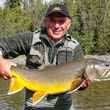




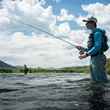
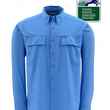



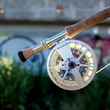
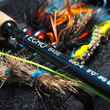



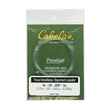


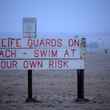

Comments
Tobin replied on Permalink
yep, wind. I like the Teton when the wind is blowing. The willows and meanders often line up well enough to give you some cover and calm water, just don't get the cast up above the tops of the willows. And years ago when I used to fish the lakes on the Blackfoot Res, the wind was always good to back into in the float tube and toss woolly buggers and zug bugs. Some days almost got seasick from the waves. And it was one heck of a workout trying to keep the tube off the shore in those winds.
Eric replied on Permalink
Swinging flies is a great way to defeat the wind, as is learning how to roll cast well. As you say soft hackles and tranditional wet flies do not enjoy the popularity they once did, but their use seems to be on the rise and I always bring fish to the net when I employ them (which is pretty much all the time). Also, having a reel loaded with single handed spey line, and knowing how to use it, will greatly help those anglers who find themselves in windy conditions.
Wayne replied on Permalink
My weapon of choice is usually the low, brisk sidearm cast or, with a weighted nymph, the "chuck-and-duck" off the downstream pick-up. But I didn't see any mention of positioning yourself to accommodate the wind direction. If at all possible I try to get the wind at my back or at least quartering from the rear and change my tactics as necessary to get it to work for me. It isn't always do-able if the wind is gusty and variable but it's worth striving for.
Jim Dowd replied on Permalink
Cast the line on the downwind side of your body; using a backcast when necessary to accomplish that orientation.
Cast a tight loop to improve aerodynamic efficiency.
Use hauls to increase line speed.
Align the trajectory of the cast so that the presentation cast unrolls and straightens at the exact moment it touches the water.
Stay calm. Be deliberate. Focus on good timing with no slack. Pay attention to fundamentals, especially straight line path of the rod tip.
Practice, practice, practice!
Glenn Dotter replied on Permalink
Living and flyfishing the Arkansas River in Colorado is living and fishing in the wind capital of the state. 10mph winds are the rule. But usually after 2pm 15 to 25 becomes the rule. Dry's become nearly impossible, but big ones like hoppers and chubby chernobles with bead head nymphs can salge your day. When you get 5 to 10 you are in tall cotton and the fish generally cooperate.
Good article
Dirk Kortz replied on Permalink
Surprised you didn't mention the single haul. I've found it the most effective way to cast into the wind. This increases your line speed with less effort than speeding up your stroke and generally works better. If a strong wind is coming from behind, the haul is done on the back stroke. Admittedly it won't help you with some kinds of casts but it will get you more distance and accuracy against a stiff wind. Also, thanks for mentioning soft hackles! I had forgotten how useful they are on windy days and wish I had remembered a couple of days ago in a lot of wind on the Rio Grande.
Curtis Lou Gesch replied on Permalink
The best answer to "how to dry-fly fish during windy conditions" is this: Curl up and read a book instead
Pages